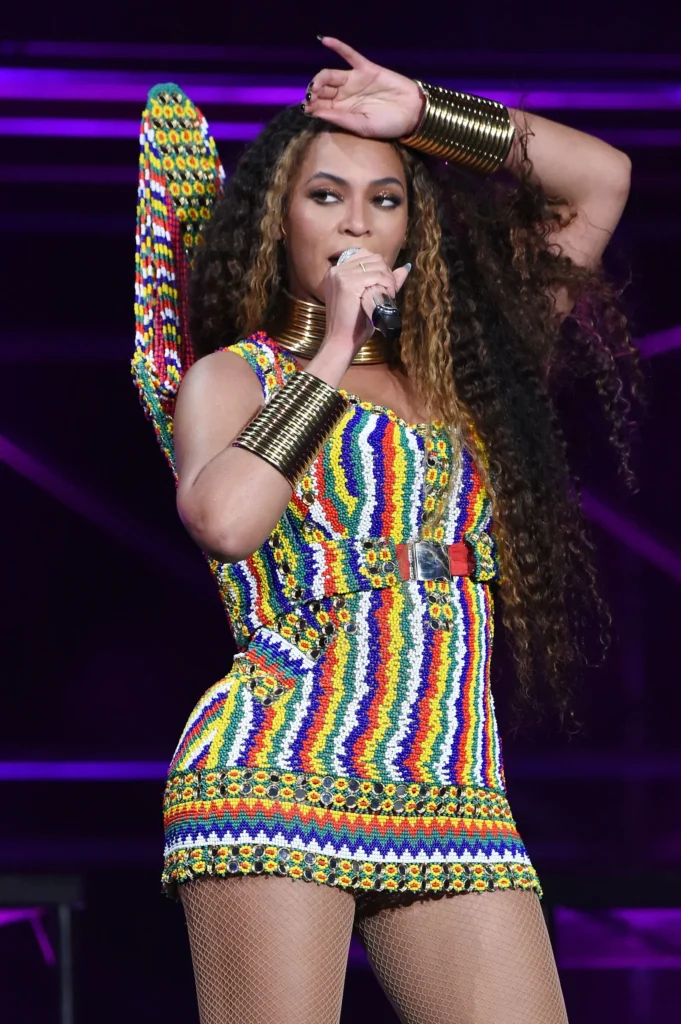Beads are among the most intriguing and important symbols in African culture, past and present. If you are born in Africa, it is very likely you wore beads as a child no matter which country. It is a fact that Africans bestow great significance to their cultural artifacts, one of them being the beads. The materials used in making beads/beadwork are of the largest variety, from bone to glass. The colors and sizes, the significance of the materials chosen, the placement of beads (on the body, clothing, or articles) among other uses. The color, size, shape, and region on the body that the beads are worn meant many different things.

Large and colorful beads symbolized wealth and social status in many African societies. In Egypt, nobles were known for adorning even their pets with beads, while Nigerian kings also wore beads to show their royalty. Among the Zulu ethnic groups, love messages are transmitted in a most confidential manner – through beads. There were beads that were worn for fertility, especially by women around their waists in many African cultures. In most African countries, beads are common practices for married women to wear around their waists to appeal to their husbands and young women were taught to use the beads to satisfy their future spouses.
Beads were also used for barter trade and other forms of trade. Beads would be exchanged for food or livestock and were used as an early means of currency. In fact, in some West African countries, trade beads had their own special markets because they were precious and rare and were used as a method of investment. Beads also played a big role in the beliefs of African societies as many amulets and charms consisted of beads.

A famous ritual in the Zulu culture is the annual ceremony known as the Umkhosi woMhlanga, the Reed Dance and is a centuries-old tradition. It takes place in September, right at the start of spring, at the KwaNyokeni Palace in Nongoma, Zululand. Young Zulu maidens from all over the country arrive to take part in a colorful cultural festival, the Royal Reed Dance festival – or Umkhosi woMhlanga in the Zulu language. These are spread over several days and represent an important rite of passage for the young women.
For visitors to KwaZulu-Natal, South Africa’s most Popular tourist destination, the Reed Dance festival offers the unique opportunity to experience the natural beauty and majesty of the Kingdom of the Zulu, combined with the vibrant spectacle of Zulu cultural life. The road to the Reed Dance festival runs north from the city of Durban, and winds through the green lushness of the North Coast sugar-belt, skirting through the Kingdom’s world-renowned wildlife reserves of Zululand and Maputaland. Finally, it leads into the gently rolling hills and valleys of Zululand, a landscape rich with the silent memories of the heroic clashes of the Anglo-Zulu War, which took place more than 100 years ago.
Steeped in the history of the rise of the Zulu kingdom under the great King Shaka, the Reed Dance festival has been tirelessly celebrated by countless generations and attracts thousands of visitors from throughout the country and from across the world. A dignified traditional ceremony, the Reed Dance festival is at same time a vibrant, festive occasion, which depicts the rich cultural heritage of the Kingdom of the Zulu and celebrates the proud origin of the Zulu people.

The Reed Dance is also a celebration of the Zulu nation and performs the essential role of unifying nation and the king, who presides over the ceremony. The festival takes its name from the riverbed reeds, which are the central focus of this four-day event. The reed-sticks are carried in a procession by thousands of young maidens who are invited to the King’s palace each year. More than 10,000 maidens, from various communities throughout the province of KwaZulu- Natal, take part in the Reed Dance ceremony, with the rest of the Zulu nation helping them to celebrate their preparation for womanhood. It is a great honor for the young women to be invited to take part in the Reed Dance ceremony, and it’s also a source of great dignity and pride for their families and communities.
According to Zulu tradition, only virgins are permitted to take part in the festival to ensure that they are ritually ‘pure’. The Reed Dance festival is a solemn occasion for the young women, but also an opportunity to show off their singing, dancing and beadwork, the fruits of many months of excitement and preparation. The women of KwaZulu-Natal make some of the finest beadwork in Africa, and the Reed Dance is an especially vibrant and colorful occasion on account of the rich beadwork on display. For visitors to the Reed Dance, this exquisite handiwork can provide a unique souvenir or gift to take home. From each region in the Kingdom comes a distinctive craft tradition, and the colors, patterns and styles of the beadwork luxuriantly displayed by the young women, as both ornaments and clothing attest to the region of origin of the craftwork.
Love among the Zulu people was a very private matter. A traditional woman will never say ‘yes, I love you’ because love must always be kept secret. Love messages are transmitted in a most confidential manner – through beads. Complex beaded “love letter” panel necklaces in Zulu society played a fundamental role in ritual courtship at a distance. Young girls crafted “love letters,” to send to their potential suitors to attract the attention of young men who worked away. With the beaded “love letters,” young women could craft secret messages of love to a prospective suitor using colors and patterns understood only by the two of them. Incwadi Yothando Ucu or Ubhala Abuyise means ‘one writes in order that the other should reply’. There is a misconception that every piece of beadwork is decipherable in the same way as written correspondence. However, the Zulu ‘love letter has a symbolic message associated with certain types of beaded necklaces. Color carries great symbolism, for example a green ring means a very young has nonetheless accepted proposal. As the relationship progressed, she would another ring to show her love evolving. While some love letters are easily readable with their colors and patterns, many remain a mystery to everyone except the two communicators. Communication through beads was widely used by many spheres of Zulu society, an ethnic group notoriously known for speaking in few words. Love letters remain one of the traditions still practiced, yet not to the extent as it used to be.



